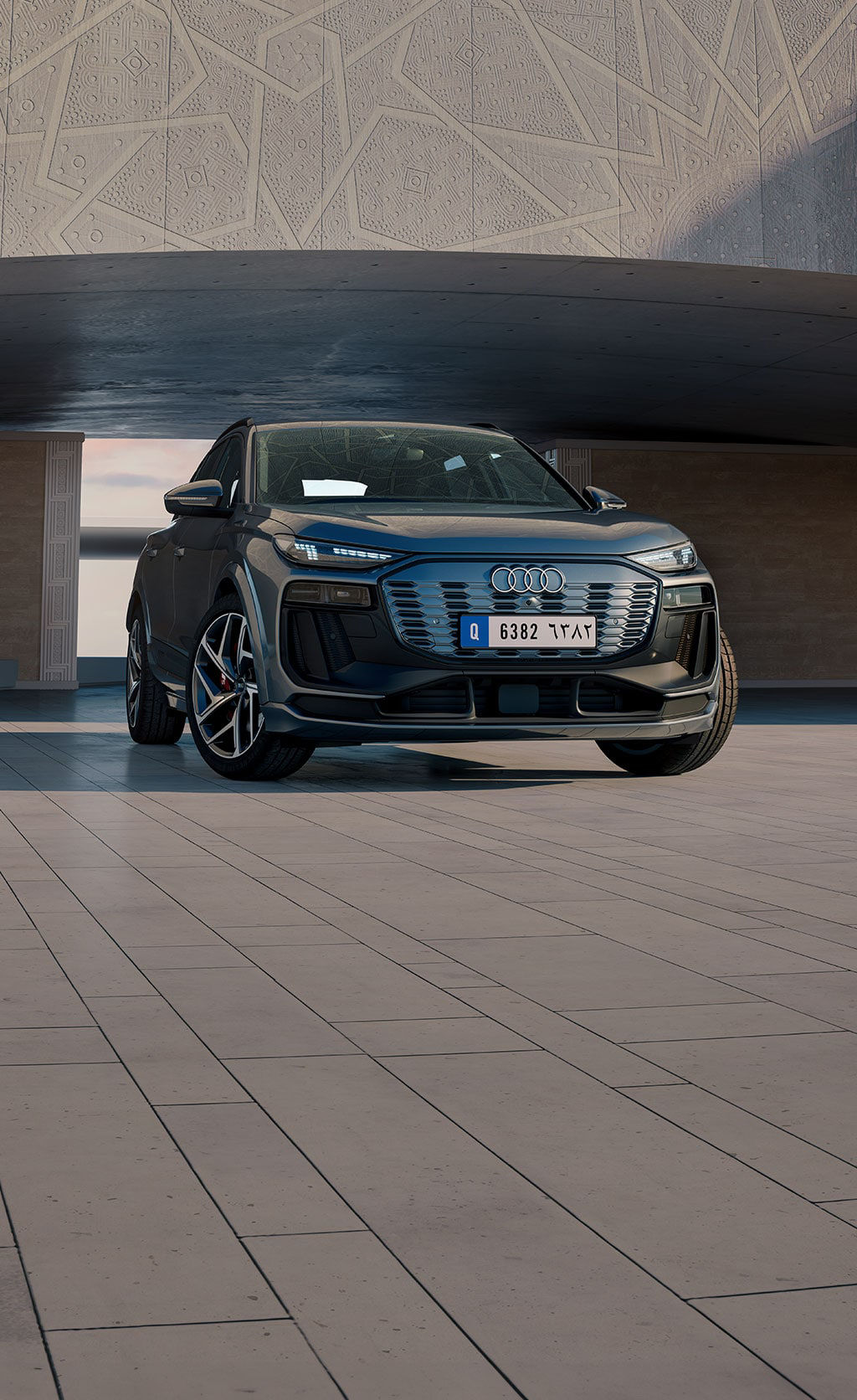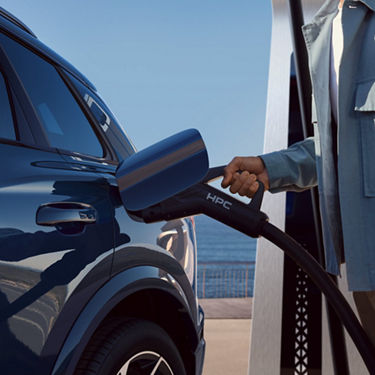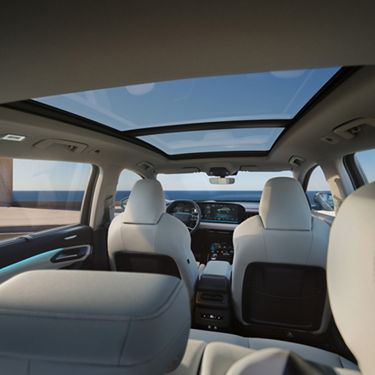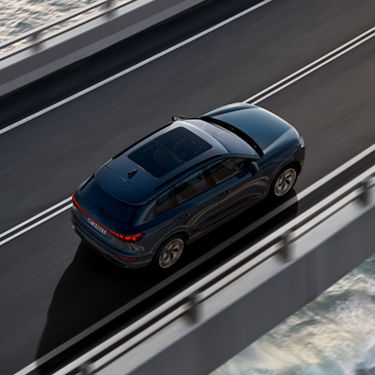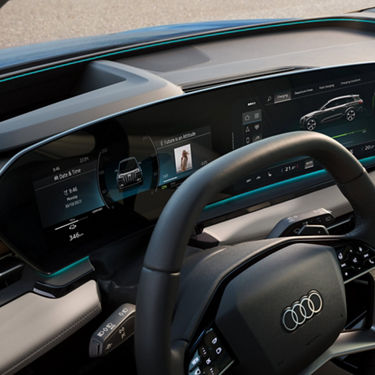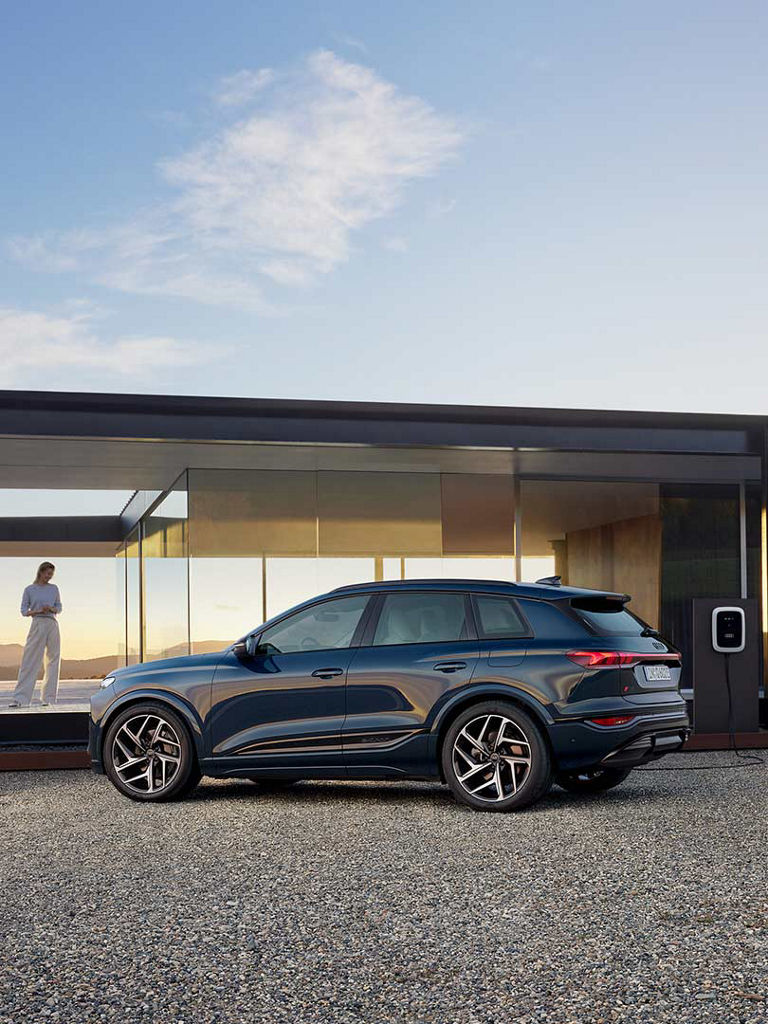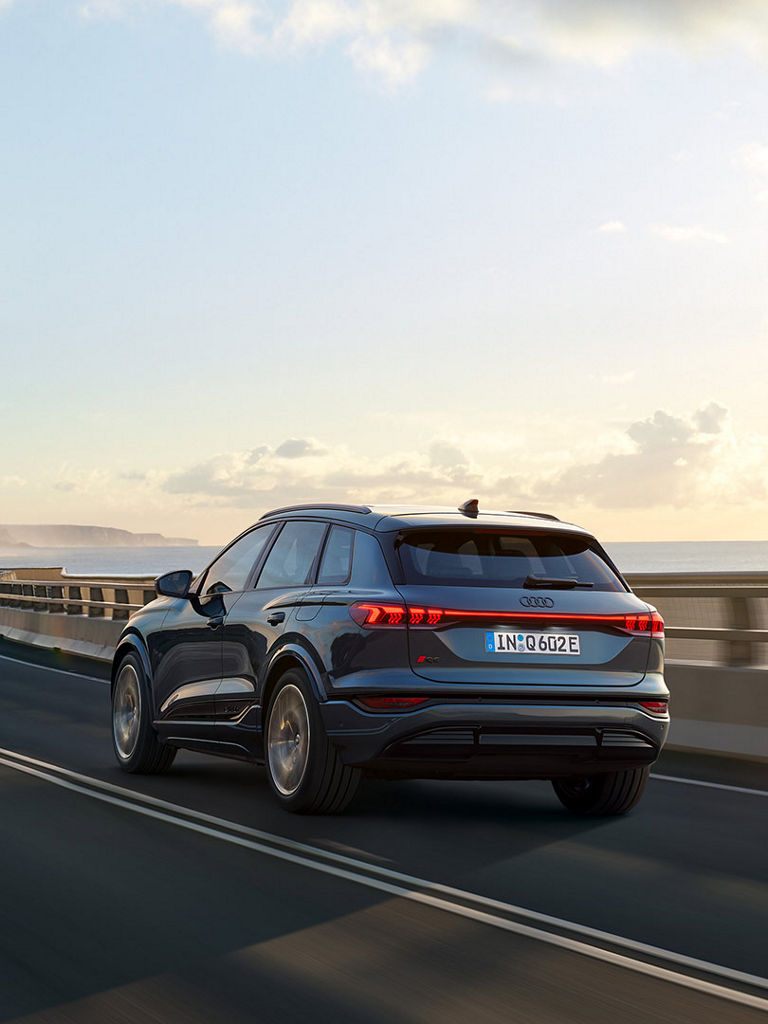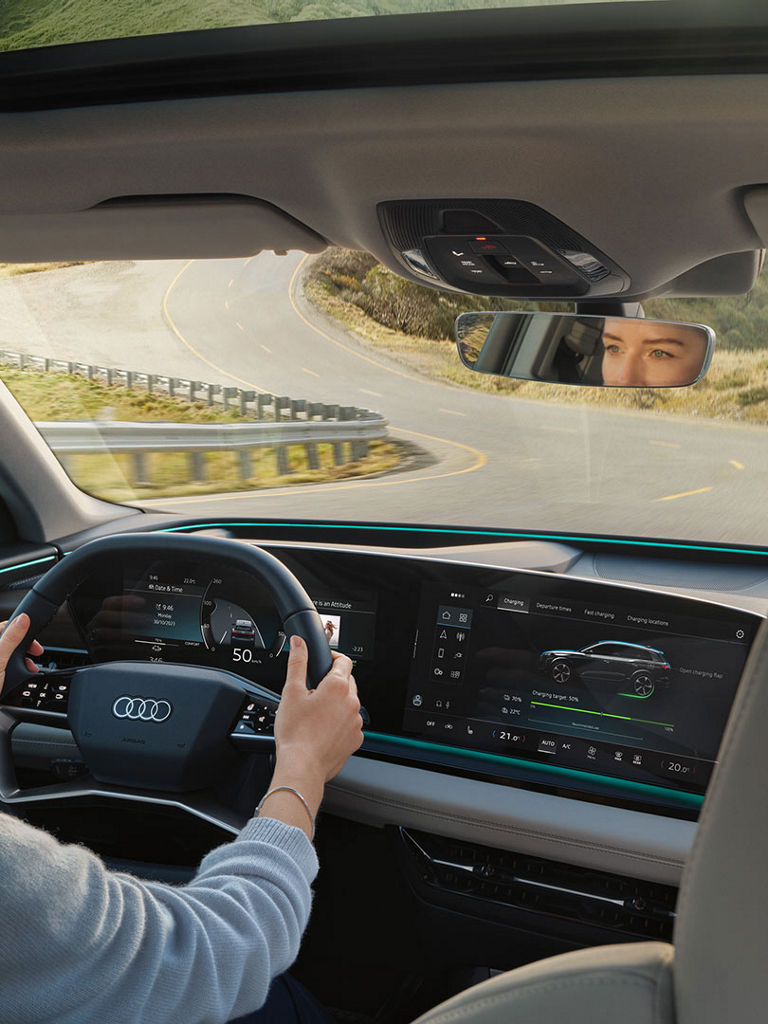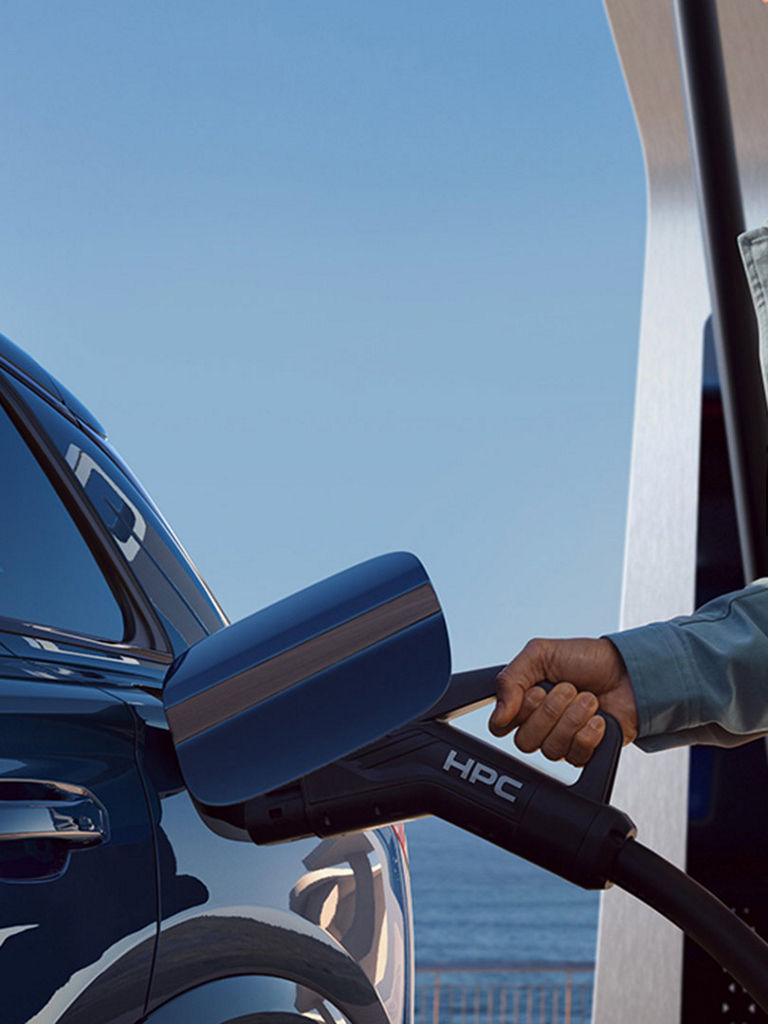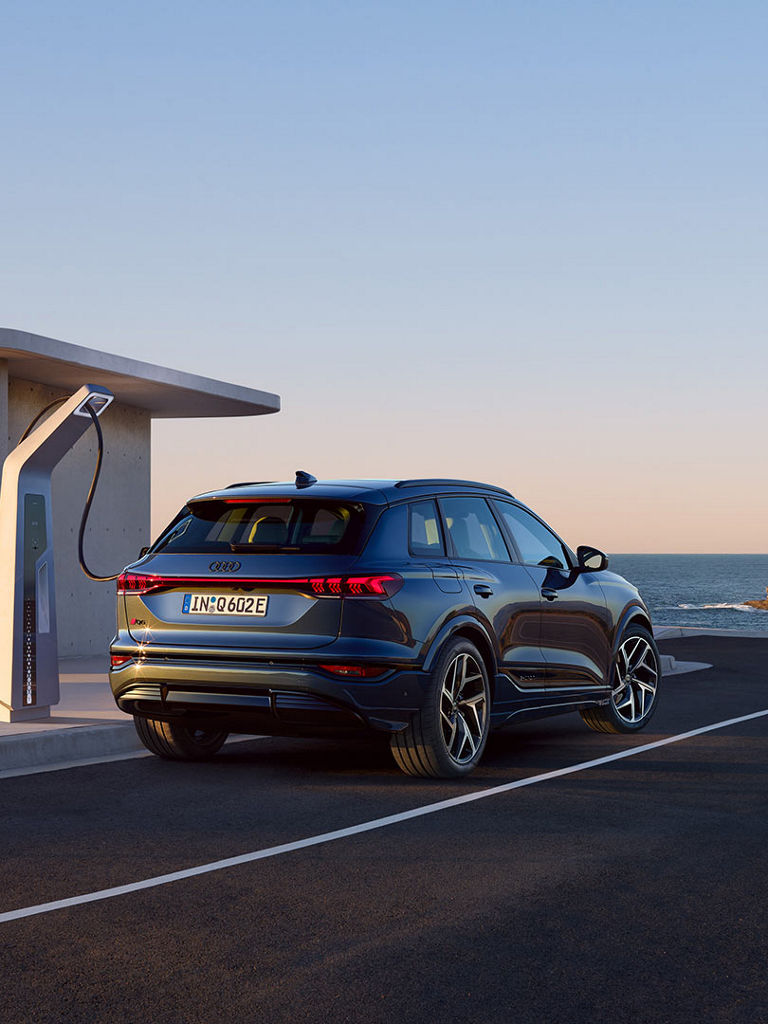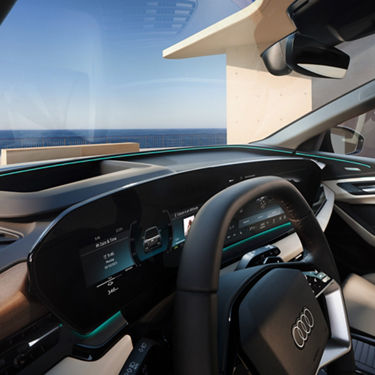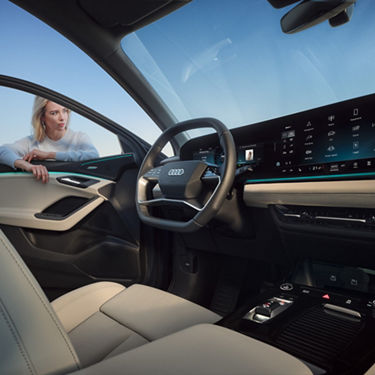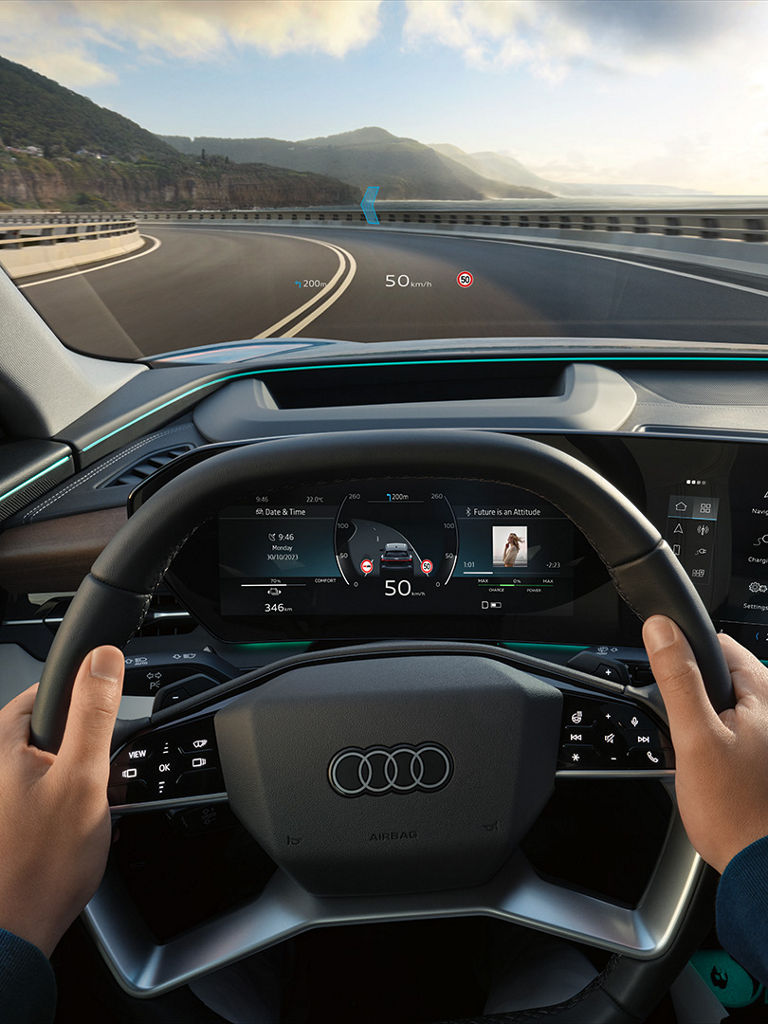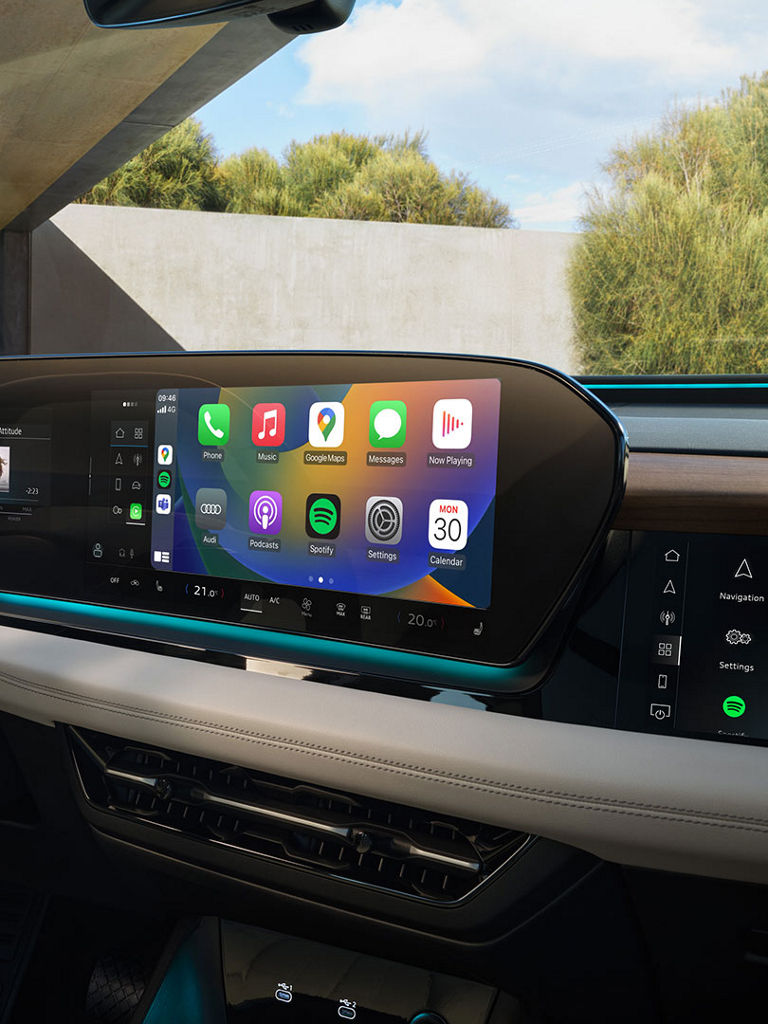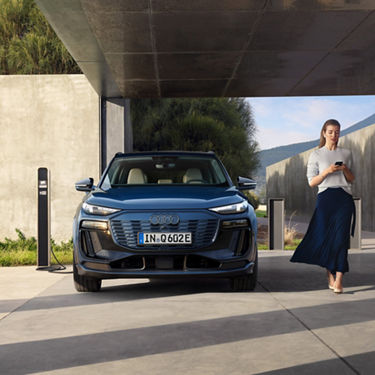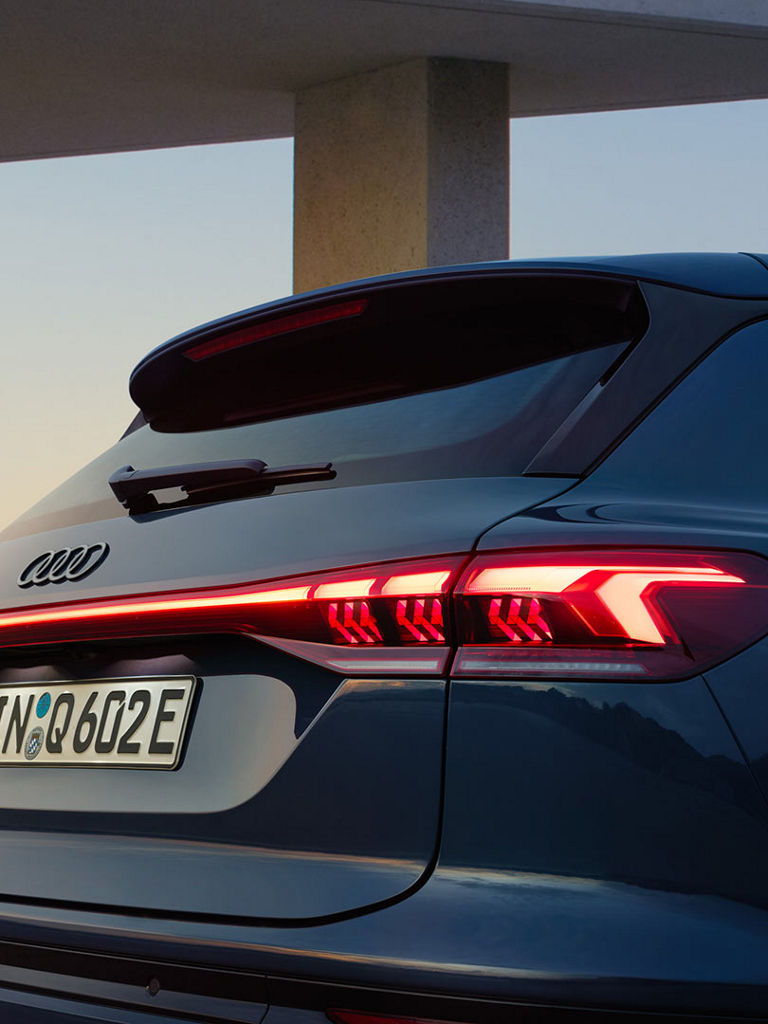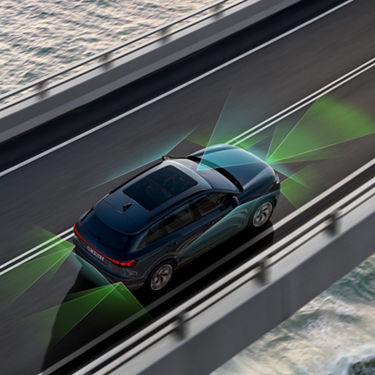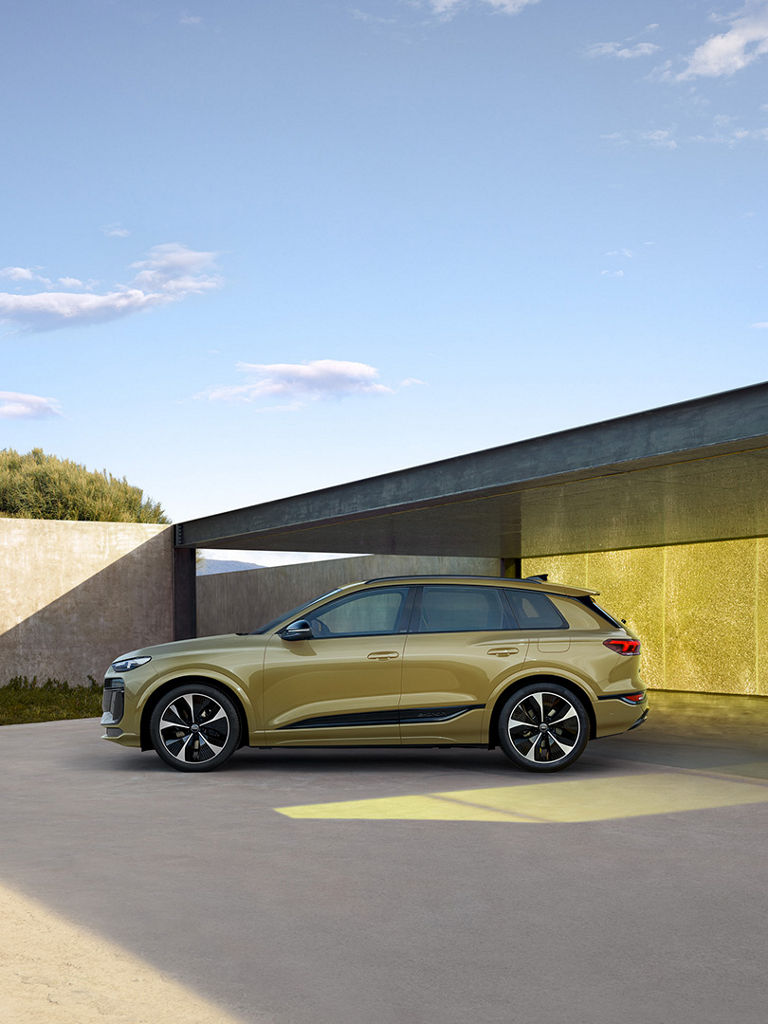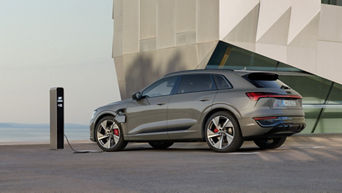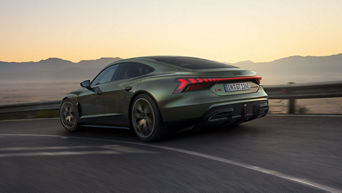Range (up to)
625km¹
10 min recharge:
255km²
10% to 80%
21min²
Power up to
285
kW
According to UN-GTR.21
Acceleration (0-100 km/h) in Launch Control mode up to
5,9
s
Battery capacity (net)
94.9
kWh
Electrifying performance.
The heart of the vehicle is the 800-volt lithium-ion battery integrated flat into the underbody with its impressive performance – both when charging and driving. Look forward to efficient, fast charging and a power output of up to 285 kW.
Progressive interior design.
Discover the new design of the upper and lower interior elements – from the door trim to the dashboard all the way to the centre console. The way the controls are arranged looks just as clear and tidy.
Pioneering e-design.
The progressive vehicle design combines electric performance and prestige. It is defined by masculine proportions, the inverted Singleframe at the vehicle front end and the inlays on the sides that indicate the battery in the vehicle floor.
Prepared for everyday life.
The Audi Q6 e-tron impresses with a generous amount of space – from the numerous storage compartments and front luggage compartment to the rear luggage compartment designed for flexible use.
All-rounder with e-power.
Climb in and experience the smooth acceleration of the Audi Q6 e-tron. Its electrical performance is supported by driver assist systems as well as numerous driving modes. Adaptive air suspension provides even greater ride comfort and driving dynamics.
Audi exclusive.
Make your Audi Q6 e-tron unique – as unmistakeable as you are – with Audi exclusive.
- The range varies between 540-625 kilometres depending on the selected equipment of the vehicle.
- The charging time of the battery, the maximum DC charging capacity at High Power Charging (HPC) charging stations and the topped-up range were calculated according to DIN 70080 and can vary depending on a number of different factors including ambient and battery temperature, the use of other country-specific connectors, the use of the preconditioning function (e.g. remote-controlled air conditioning of the vehicle), the capacity available at the charging station, state of charge and battery ageing. Charging capacity is reduced as the state of charge increases. Charging losses are considered.
